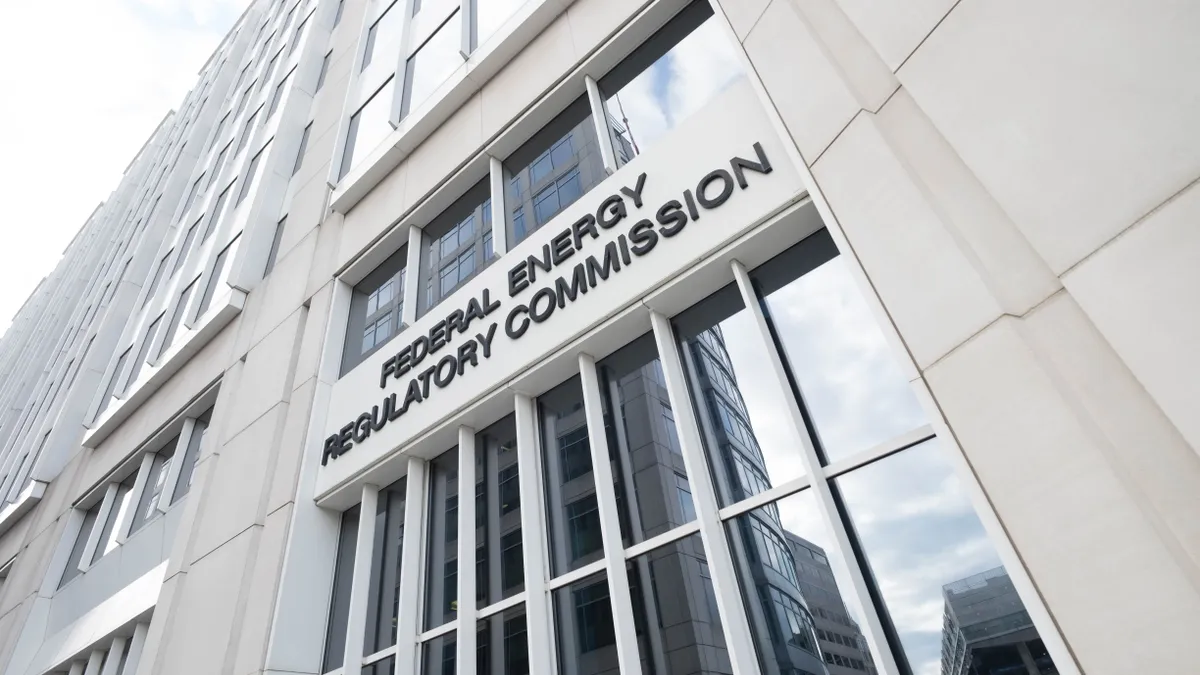Dive Brief:
-
A federal appeals court on Tuesday vacated Federal Energy Regulatory Commission orders setting the return on equity for transmission owners in the Midcontinent Independent System Operator’s footprint, adding another twist in the agency’s long-running effort to establish a methodology for determining appropriate ROEs.
-
FERC failed to adequately explain in a rehearing order why it reinstated the use of a risk-premium model as part of its methodology in setting ROEs after it had previously rejected that model, the U.S. Court of Appeals for the District of Columbia Circuit said in the decision.
-
“Encouraged to see today's DC Circuit decision vacates @FERC's 3-1 MISO [transmission owner]'s return on equity,” FERC Chairman Richard Glick, who voted against the overturned order, said in a tweet Tuesday. “Reversing FERC on the risk premium model is a big win for consumers, helping make energy costs more affordable.”
Dive Insight:
FERC for years has been working to fine-tune its process for determining an appropriate ROE for transmission owners. ROE helps determine how much money transmission owners, typically utilities, earn on their transmission assets as well as how much consumers pay for them.
The appeals court decision stems from a 2013 complaint that argued MISO’s ROE was too high. Using a methodology FERC developed to set the ROE for New England transmission owners, the agency in 2016 lowered the return for MISO’s transmission owners to 10.32% from 12.38%.
A year later, the appeals court found that FERC’s decision in the New England case was flawed, so the agency decided to reconsider its MISO decision as well.
FERC responded by developing a four-part methodology to set ROEs, including the use of a risk-premium model.
When FERC finally set the ROE for the MISO transmission owners, however, it jettisoned the risk-premium model from its methodology. The agency set the ROE at 9.88%.
MISO transmission owners and customer groups asked FERC to reconsider its decision. In response, FERC in May 2020 added the risk-premium model back into its methodology and determined the ROE should be 10.02%.
Then-Commissioner Glick partly dissented from the decision. “It appears that the Commission again has chosen a path directed by the results, in this case the perceived need to award a higher ROE, rather than the law and the facts,” Glick said, adding that the agency failed to justify the decision.
The rehearing order that reinstated the risk-premium model was based on “far less convincing” rationales than those in the initial decision, according to Glick. “Shifting from such strong arguments to such suspect ones underscores the extent to which subjective factors seem to be operating in the background while also opening the Commission up to considerable risk on judicial review, creating even more of the uncertainty we ought to be trying to minimize,” Glick said.
Glick urged FERC to stop the “endless fiddling” with its ROE methodology, which he said undermines the predictability that helps transmission owners make long-term investments.
In its decision, the appeals court said FERC failed to adequately explain its decision to reintroduce the risk-premium model after initially, and “forcefully,” rejecting it.
“Because FERC adopted that significant portion of its model in an arbitrary and capricious fashion, the new Return produced by that model cannot stand,” the court said. “We therefore vacate FERC’s orders.”
The court declined to address appeals from transmission owners and customer groups over the refunds FERC had ordered in the case, saying the issue was effectively moot because it had vacated the underlying decision.
Only those who oppose building transmission can be happy with the court’s decision, according to Larry Gasteiger, executive director of WIRES, a trade group for utilities, grid operators and other companies in the transmission sector.
"More transmission is increasingly becoming national policy, and protracted litigation over how much utilities can earn on transmission investment only creates more uncertainty and undermines the national priority of getting needed transmission built,” Gasteiger said in an email Wednesday. “These delays ultimately harm the nation’s electricity consumers, delay meeting clean energy goals, and jeopardize the resilience of the grid.”
UPDATE: This story has been updated to include comments from Larry Gasteiger, WIRES executive director.















